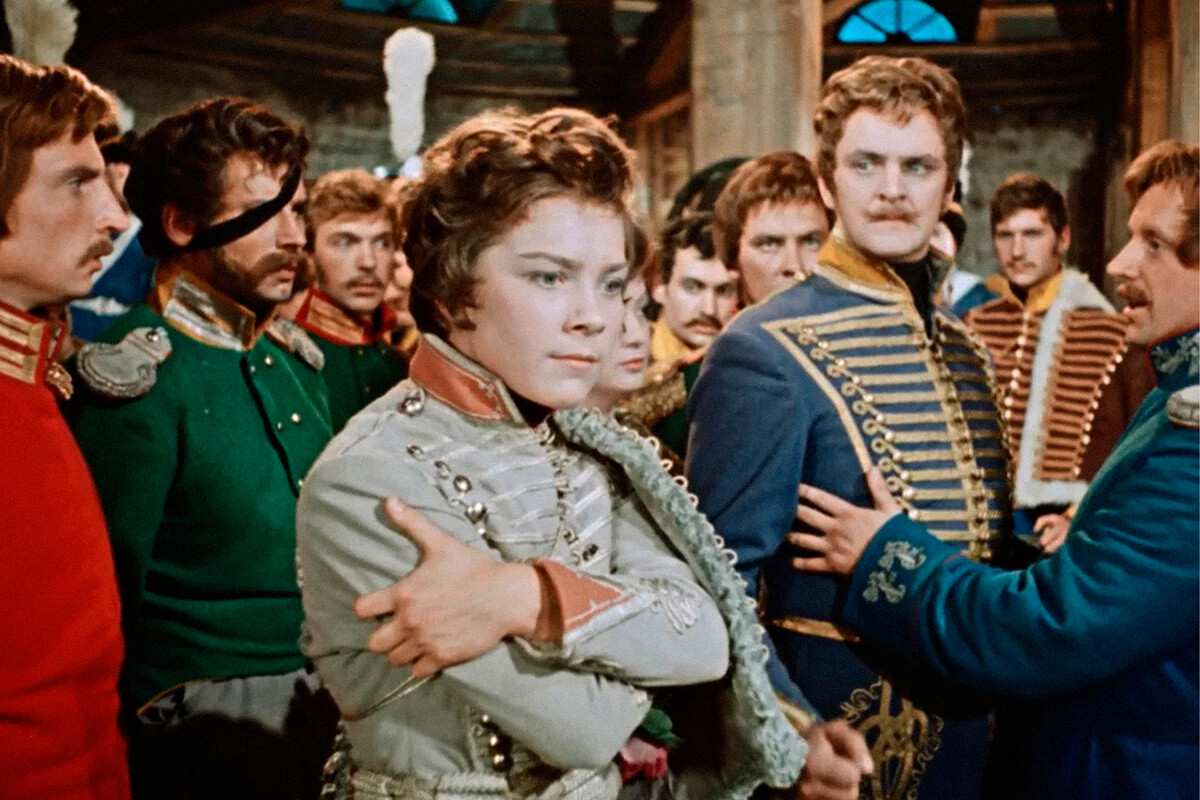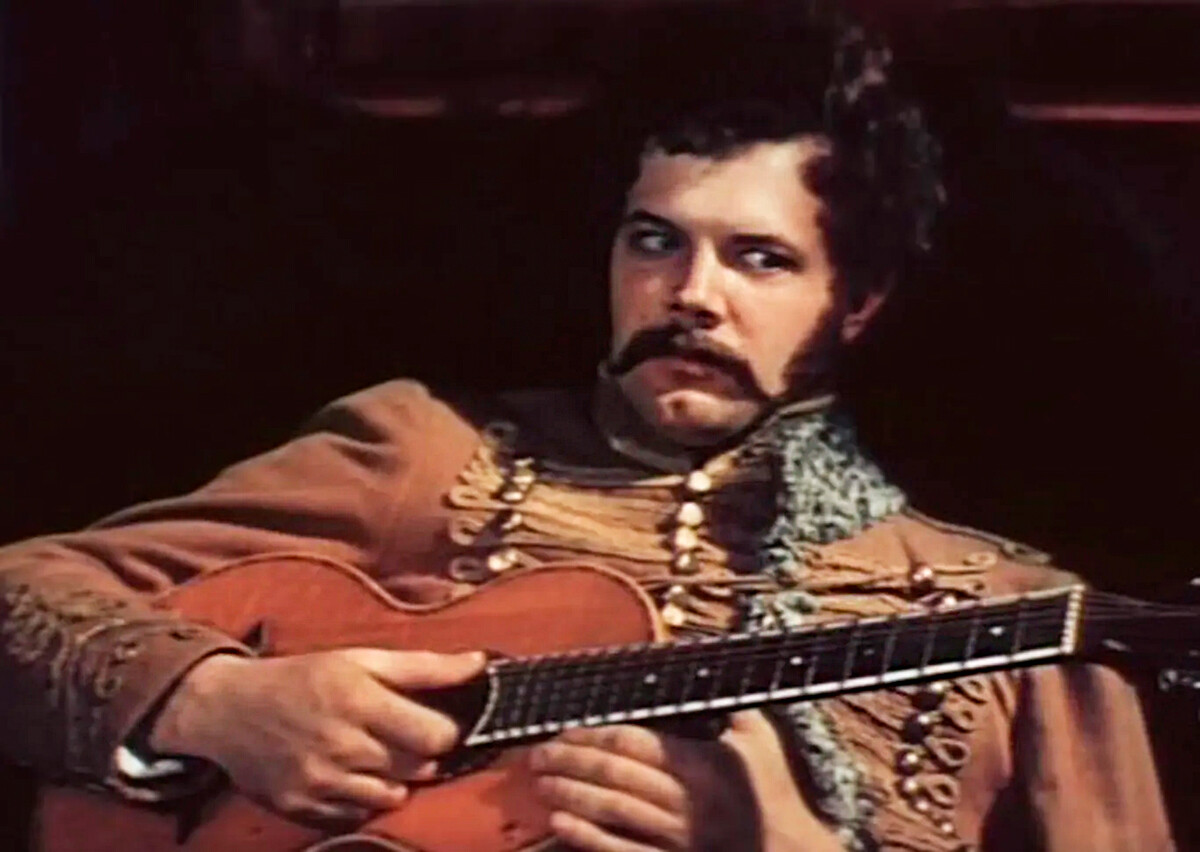

The movie tells of the events of the Patriotic War of 1812 when Napoleon's Grande Armée invaded the Russian Empire. At the center of the narrative is the figure of General Field Marshal Mikhail Kutuzov, the commander-in-chief of the Russian troops.
Filming took place at the height of World War II in 1943. The Red Army had already begun to drive the Wehrmacht out of its territory, so it is no coincidence that, in 'Kutuzov', particular attention was given to the expulsion of the French from Russia.
Despite the difficult situation in which the USSR found itself at the time, filming was approached in a thorough manner. Burning cities, columns of infantry marching, artillery volleys and dashing cavalry attacks – viewers could see all this on the screen.

It is the Summer of 1812, the beginning of the war against Napoleon, and 17-year-old Shura Azarova dreams of fighting the enemy. Since there is no place for women at the front, she disguises herself in the uniform of a hussar cornet (junior officer) and, pretending to be a man, heads for active army service…
It is believed that the prototype of Shura was "cavalry maiden" Nadezhda Durova, who participated in military action under the guise of uhlan lancer Alexander Sokolov. After her exposure, Tsar Alexander I personally permitted her to continue in the army under her real name.
'Hussar Ballad', a comedy, was not allowed to be shown in cinemas for a long time. Bureaucrats believed that the movie was making fun of the gallant deeds of the heroes of the Patriotic War. The filmmakers, however, managed to convince them that it actually romanticized and glorified the hussars.
The winter scenes, meanwhile, were shot in April when the snow had already melted. The filmmakers had to use large quantities of chalk, white paint, fine sawdust and mothballs, which caused allergic reactions in many of the crew.
As filming took place in very comfortable surroundings in the Moscow Region, the actors playing the hussars ate extremely well, had ample sleep, spent a lot of time in the open air and looked nothing like cavalrymen exhausted by a war with a formidable enemy. When Mosfilm head Ivan Pyryev was shown the rushes, he exclaimed in outrage: "Where did you find those sated, ugly mugs?"

This epic historical drama in four parts based on the eponymous novel by Leo Tolstoy covers the events of the War of the Third Coalition against the French, including the ‘Battle of Austerlitz’ in 1805 and Napoleon's 1812 Russian campaign.
The battle scenes in the epic were re-enacted on a strikingly grand scale. Three thousand Soviet Army soldiers were enlisted to shoot the scenes of the ‘Battle of Krasnoi’, while 15,000 were brought in for the Battle of Borodino, in addition to 950 cavalrymen from a specially formed cinema cavalry regiment.

Four dozen enterprises were involved in making authentic military uniforms, equipment and weapons, while 58 museums made their collections of unique objects from the period available.
Twenty-three tons of explosives, 40,000 liters of kerosene, 2,000 blast simulators and 15,000 smoke hand grenades were used for the "fighting" at Borodino alone.
The movie's director, Sergei Bondarchuk, was obsessive in his approach to filming the military action. "Kutuzov himself may not have planned the Battle of Borodino in such detail as Bondarchuk," according to his colleague, director Georgiy Daneliya. "How many maps and charts lay in front of him during work on the movie and how many historical military documents he picked up! Wags said that if he had been in command at Borodino, perhaps Moscow would not have ended up being abandoned by Napoleon."
In 1969, 'War and Peace' won an Oscar in the ‘Best Foreign Language Film’ category and, a year later, famous Italian producer Dino De Laurentiis, impressed by 'War and Peace', invited Bondarchuk to direct the big historical blockbuster 'Waterloo'.

The movie about Napoleon's last major battle was a Soviet-Italian co-production. Filming took place in Western Ukraine and the Soviet Army, just like in the aforementioned 'War and Peace', put 15,000 soldiers at the director's disposal.
Sergei Bondarchuk, again, proved himself to be a unique master of the sweeping battle scene. He virtually orchestrated a minute-by-minute re-enactment of the Battle of Waterloo. The director focused on every detail. For instance, he got every British cavalry squadron to ride horses of a particular color: one on chestnuts, another on bays, a third on dappled mounts and so on. The horses joined the action on a signal, depending on changes in lighting.
Also, because of favorable lighting, Bondarchuk was capable of filming a cavalry attack at 2 pm, when the horses were usually brought their feed and it was practically impossible to tear them away from it. To the director's irritation, movie consultant Lt-Gen Ivan Oslikovsky would gesture helplessly with his hands, observing: "I can tell people and soldiers what to do, but how do I issue orders to animals?"
Despite its lavish scale and stellar cast (Rod Steiger, Christopher Plummer and Orson Welles), 'Waterloo' was a complete flop at the box office. Because of this fiasco, Stanley Kubrick was forced to hurriedly drop his ambitious project devoted to the life of Napoleon.

The movie tells the story of a famous protagonist of the Patriotic War of 1812 – officer and poet Denis Davydov, who commanded one of the "flying" partisan detachments.
Made up of hussars and Cossacks, the "flying" detachments carried out bold cavalry raids in the rear of Napoleon's Grande Armée, effectively cutting its communications and instilling fear in the hearts of the French and their allies.
'Squadron of Flying Hussars' was one of the top Soviet theatrical releases of the early 1980s. It was seen more than 23 million times in the cinema.
"The landscapes are strikingly shot in the movie – the frozen Vereshchagin-style woods, the boundless winter fields, the streams sparkling in the sun, the roads lost in dense thickets or disappearing over the horizon," wrote Soviet movie critic Yury Tyurin. "In the movie's best scenes, the spirit of the national struggle of 1812 comes to life on the screen. And, we are today enthralled by the portrayal of that famous bard and hussar, who said about himself: "Let Russia ring with martial thunder – in that song I lead the tune!"
If using any of Russia Beyond's content, partly or in full, always provide an active hyperlink to the original material.
Subscribe
to our newsletter!
Get the week's best stories straight to your inbox